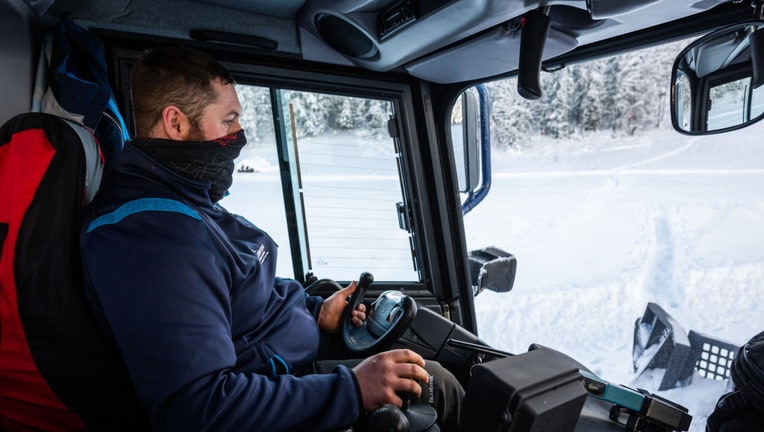Expert explains if warming up your car in cold weather is necessary

FILE-A driver sits in his vehicle in the snow. (Photo by Philipp von Ditfurth/picture alliance via Getty Images)
Now that we are in the heart of winter, many look for ways to stay warm, including in their cars. Some fall into the habit of starting the engine to let it warm up a few minutes before pulling out of the driveway.
While this subtle act may not seem like a big deal, one auto expert is chiming in on this highly debated topic.
AAA expert weighs in on warming your car in the winter
AAA Sr. Manager David Bennett tells FOX Television Stations that while the practice is common among car owners, it’s also unnecessary.
"Sitting in a car to warm up an engine before driving in cold temperatures is a fairly common practice that is unnecessary with today’s modern engines. Once fuel-injected engines came along, this practice was no longer necessary. Back when cars had carburetor engines, one would need to wait a few minutes to warm up the engine before driving as it may stall out."
RELATED: Are you breaking the law if you warm up your car in your state?
While some may not think about the possible fallout of warming their cars, Bennett delves into whether it's effective or not.
"Modern engines warm up quicker when driven versus idling in place. Avoid rapid acceleration (at all times, especially when the engine is cold) until the vehicle has reached its normal operating temperature, not increasing engine wear."
Of course, there’s always a downside to idling your car in cold temperatures over time, and Bennett breaks down what to be aware of.
RELATED: Warming up your car in cold weather can damage your engine. Here's what to do instead
"One, it could increase wear to internal engine components depending on how they drive the vehicle. ("hard", e.g. jack-rabbit starts, etc.) before the engine reaches normal operating temperature. "Regarding fuel efficiency, this will decrease as you are essentially wasting fuel waiting until the engine warms up. When removing snow and ice in colder seasons, start the engine and turn on the defroster (front and rear windows, side mirrors if equipped) to ensure clear visibility. Using the defrosters will help remove ice quickly from the windows. Remember to remove snow from the hood, roof, and rear part of the vehicle so the snow does not fly off your vehicle and onto a vehicle behind you, which could cause them to swerve or temporarily lose visibility."
Since the vehicle is sitting still and resting, Bennett notes that you are reducing the car's fuel efficiency, thus using more fuel than is necessary, which can impact the environment.
"Start the engine, then adjust your mirrors, put on your seat belt, ensure you have clear visibility through all windows, and then begin to drive the vehicle to have the engine reach normal operating temperature faster. If equipped, use your seat heater (and steering wheel heater) – these heat up quickly and will ensure you are warm while your engine reaches normal operating temperature. Also, having a jacket and gloves in your car during colder weather is always a good idea."
Is it legal to warm up your car in your state?
While there is no national law against idling a vehicle, some states have anti-idling laws to prevent air pollution. The punishment and exact anti-idling measures vary from state to state, and even city or county, with penalties ranging from fines to written warnings, FOX Weather reported.
The U.S. Environmental Protection Agency has compiled a list of idling laws for 30 states and the District of Columbia, both existing and proposed. If it's on the list, you can click here to find out more about your state.
FOX Weather contributed to this report. This story was reported from Washington, D.C.

